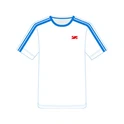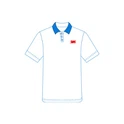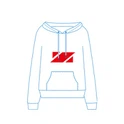Why are shirts called polo?
Introduction:
Shirts have always been an essential part of our wardrobe, and they come in various styles, designs, and names. One popular type of shirt that often catches our attention is the polo shirt. But have you ever wondered why these shirts are specifically called "polo"? In this article, we will explore the origins of the term "polo" and the fascinating history of these iconic shirts. So let''s dive in and unravel the story behind why shirts are called polo!
The Origins of Polo Shirts:
Polo shirts have a long and intriguing history that dates back to the 19th century. The term "polo" actually refers to the sport of polo, which is a team sport played on horseback. The origins of polo can be traced back to ancient Persia, but it gained significant popularity in the British Empire during the 19th century. Polo matches became a popular pastime among the British upper class, and players needed a comfortable yet stylish shirt for the game.
The Introduction of the Polo Shirt:
The credit for introducing the modern polo shirt goes to a French tennis player named René Lacoste. In the 1920s, Lacoste was a renowned tennis player who was often seen wearing the traditional long-sleeved, button-up shirts. However, he found these shirts uncomfortable and restrictive for playing tennis. This led him to design his own shirt that would provide more freedom of movement, breathability, and comfort.
The Creation of the Lacoste Polo Shirt:
René Lacoste, in collaboration with a textile engineer André Gillier, created the first-ever polo shirt in 1926. Lacoste''s design featured a short-sleeved shirt made from a lightweight cotton fabric known as petit piqué. The shirt had a soft collar that could be flipped up to protect the neck from the sun''s rays. Lacoste''s polo shirt had a loose and relaxed fit, which allowed for ease of movement during sports activities.
The Spread of Popularity:
Although initially created for tennis players, the Lacoste polo shirt quickly gained popularity beyond the world of tennis. Its comfortable yet stylish design appealed to people from various backgrounds and professions. Polo shirts became a hit among golfers, athletes, and even casual wear enthusiasts. The iconic crocodile logo, which is still associated with Lacoste today, was introduced to the shirt in the 1930s, further solidifying its unique brand identity.
Association with Polo Sport:
Despite its origins in tennis, the polo shirt gained a strong association with the sport of polo. This connection can be attributed to the fact that polo players also found the shirt''s design and fabric suitable for their sport. As a result, the popularity of the polo shirt grew within the polo community as well. The comfortable, breathable fabric and collar made it an ideal choice for players on the horseback, and thus the shirt became an integral part of polo attire.
Global Recognition and Brand Expansion:
During the mid-20th century, the Lacoste polo shirt gained international recognition and became a fashion symbol. It became a staple in men''s wardrobe and was considered trendy and sophisticated. Lacoste''s success inspired other fashion brands to produce their own versions of polo shirts, leading to a wide range of styles, colors, and designs.
Pop Culture Influence:
The polo shirt''s popularity continued to soar in the 1960s and 1970s, primarily due to its representation in pop culture. Iconic film stars like Paul Newman and Steve McQueen were often seen sporting polo shirts on and off the screen, further enhancing their appeal and cementing their status as a fashion statement. Polo shirts became a symbol of casual elegance and were worn by both men and women in various social settings.
Evolution and Modern Trends:
Over the years, polo shirts have evolved to keep up with changing fashion trends. While the classic piqué fabric and collared design remain timeless, designers have experimented with different materials, cuts, patterns, and embellishments to cater to diverse consumer preferences. Today, polo shirts are available in various fits, including slim fit, tailored fit, and oversized fit, making them versatile and adaptable to individual styles.
Beyond Lacoste:
While Lacoste is undeniably one of the pioneering brands responsible for popularizing polo shirts, it is essential to note that numerous other fashion labels have contributed to the expansion and diversification of these shirts. Ralph Lauren''s Polo Ralph Lauren brand, for instance, has become synonymous with the polo shirt, further perpetuating the nickname. Other high-end designers and even affordable clothing retailers have added their unique touch to polo shirts, making them accessible to people of different backgrounds and budgets.
Conclusion:
In conclusion, shirts are called "polo" due to their association with the sport of polo. René Lacoste''s innovative design in the 1920s revolutionized the concept of comfortable yet stylish sports attire, and the name "polo shirt" stuck. Over the years, polo shirts have transcended their athletic origins and achieved global recognition as a fashion staple. The combination of comfort, versatility, and effortless style has made polo shirts a timeless wardrobe essential loved by millions worldwide. So, the next time you put on a polo shirt, remember its rich history and the story behind its name!







